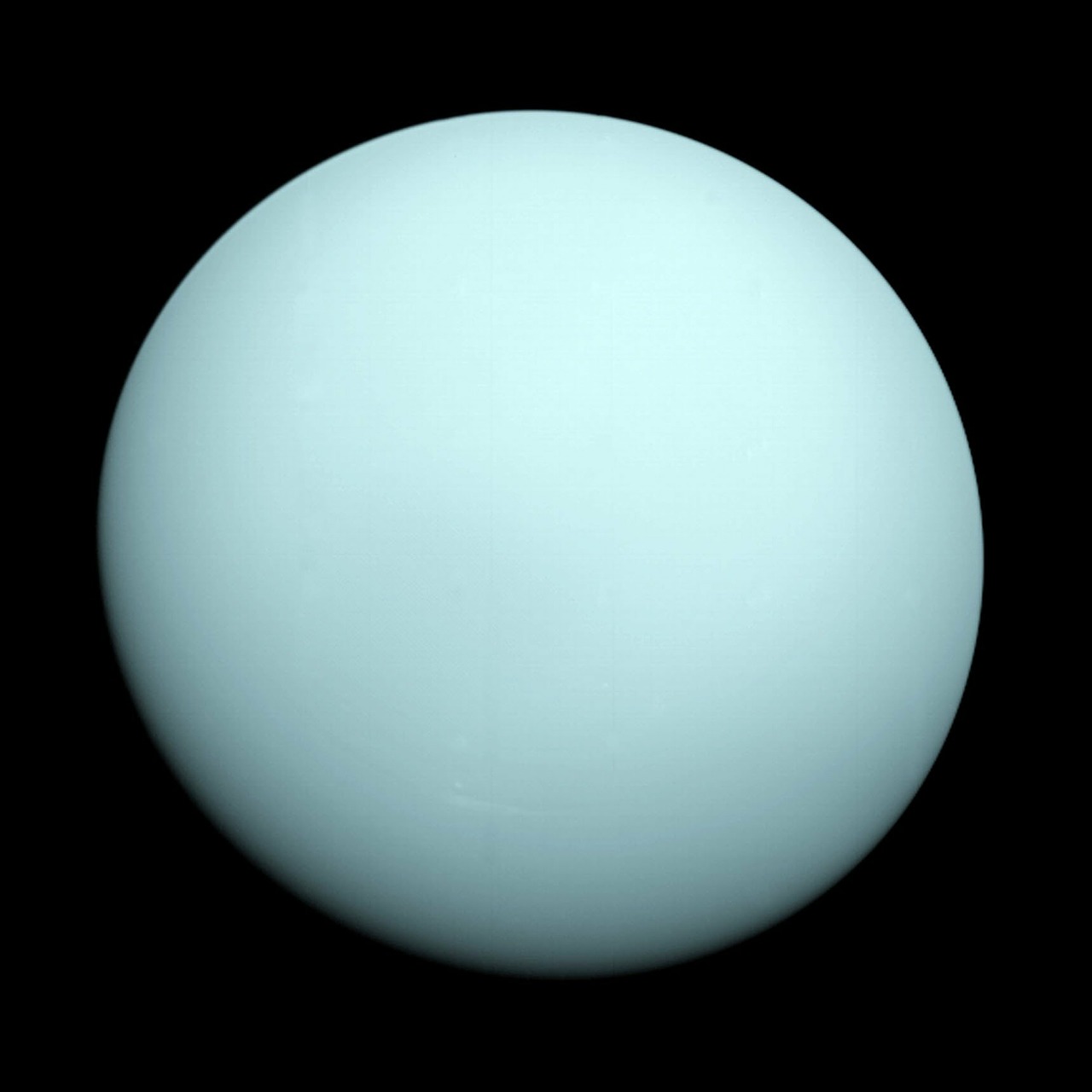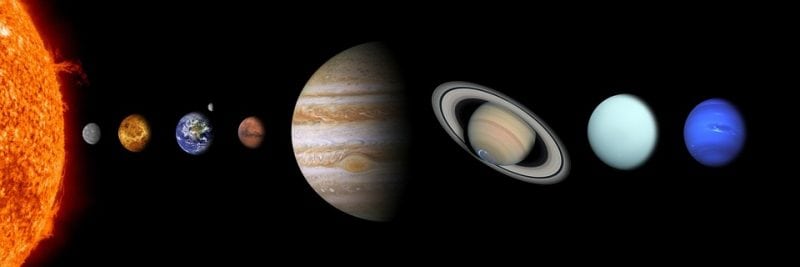
Now we finally know that Uranus smells like flatulence, the chemical also known as hydrogen sulfide. That’s right, the butt of our planetary jokes (quite literally), smells like gas. While this might sound far-fetched to you, it actually isn’t that much of a surprise to scientists and researchers.
We knew that Uranus has quite a bit of methane in its atmosphere because of the blue coloring it has, and we also know that it has both hydrogen and helium in it because of the flyby of Voyager 2. The rest of the composition of Uranus has been a question because we have a hard time actually observing Uranus since it is so far away from the Earth that even the best telescope in the world has a hard time seeing it.
This is a present from a small distant world, a token of our sounds, our science, our images, our music, our thoughts, and our feelings. We are attempting to survive our time so we may live into yours. We hope someday, having solved the problems we face, to join a community of galactic civilizations. This record represents our hope and our determination, and our good will in a vast and awesome universe – President Jimmy Carter’s message on the Voyager spacecraft
With that in mind, just how do we know what this distant planet smells like? The Gemini telescope is what taught us this very interesting development about Uranus. Physicist Patrick Irwin and his team of researchers used NASA’s Gemini telescope’s Near-Infrared Integral Field Spectrometer (also called NIFS) to do an extremely detailed spectroscopic study to see just what the makeup of Uranus’ cloud layer of.
In it, they found hydrogen sulfide, the noxious gas responsible for the smell of rotten eggs and nasty flatulence. Now the hydrogen sulfide is very faint, but it is still there and is strong enough to probably have some sort of odor.
This discovery is not only interesting in the fact that we have some idea of Uranus’ chemical makeup, but it may also point towards what Neptune is made of. Jupiter and Saturn are both comprised of large amounts of ammonia, but no hydrogen sulfide is found above the cloud layers of both planets. Neptune is very similar in composition to Uranus (scientists believe, and Voyager 2 also noted this), so this could point to what Neptune is also made of. Knowing the chemical makeup of these gas giants can teach us about how the solar system formed and where the gas giants formed at.

Image source: Pixabay
Scientists believe that “During our Solar System‘s formation, the balance between nitrogen and sulphur (and hence ammonia and Uranus’s newly-detected hydrogen sulfide) was determined by the temperature and location of planet’s formation,” scientist Leigh Fletcher explained during an interview. Basically, this means that since Jupiter and Saturn were formed separately from Uranus and Neptune, and all 4 gas giants formed apart from the terrestrial planets (Mercury, Venus, Earth, and Mars). Of course, this is all theoretical since we have no space probe that can go examine the chemical makeup of the all the gas giants, so until then scientists can observe and speculate to the best of their abilities. There is a NASA probe in the works to go and examine and study Uranus, but that is still a few years away.
You may be curious as to why scientists have to rely on a space probe to gather information instead of humans doing it themselves, and the answer is pretty clear-cut. We are “still” figuring out how to get to Mars, which is the closest planet to us. Uranus is millions of miles away, and we simply do not have the technology to travel to a planet that will take about a decade to reach. Let’s say we were able to reach Uranus, humans would die very quickly from suffocation and exposure in the -392 degrees Fahrenheit temperatures. Based on our current technology, a trip to Uranus is out of the question. So, we have to send space probes to do the work for us just to learn a little bit about this planet in our solar system.
Famous Space Probes
NASA has sent several space probes out in the hopes of learning more about our solar system (and beyond). To date, there have been hundreds of different space probes from different space agencies sent out to multiple different planets, and even our sun. These probes have been extremely crucial in our understandings of the planets of our solar system and have helped us understand the universe a little more. Out of these hundreds of probes, there are a few that stick out more than others. Here is a list of some of our favorite space probes:
- Voyager 1 and 2 (1977 – present)
- The Voyager space probes are quite possibly one of the most important probes because it gave us information about Jupiter, Saturn, Uranus, Neptune, and has gone interstellar, being the first manmade object to go outside of our solar system
- This probe changed science textbooks by providing us the information we never knew (like Jupiter’s rings, Neptune’s strange orbit, not to mention all the information learned about the gas giants’ moons)
- Pioneer (1972 – 2007)
- Pioneer was the first space probe to take pictures of Jupiter and Saturn and was the first probe to venture outside of the asteroid belt that separates the terrestrial planets from the gas giants
- The last transmission received was in 2007, and the probe will continue its journey outside of our solar system to become interstellar someday
- Viking (1976 – 1982)
- The Viking mission comprised of an orbiter and a lander on the planet Mars, making it the first manmade functioning object to land on Mars (the Russian Mars probes did land on Mars but did not survive impact)
- Viking gave us the first picture of the red planet and is a large part of humans’ future travel to Mars
- Curiosity Rover (2012 – present)
- Before anyone gets triggered, this is not a probe, but it is an extremely important mission for our understanding of the solar system
- Curiosity landed on Mars in 2012 and is still sending us information about the planet and has taught us many important things about the red planet, such as finding a good landing site for future manned missions and has even learned that Mars once had water on it by looking at the geologic records









